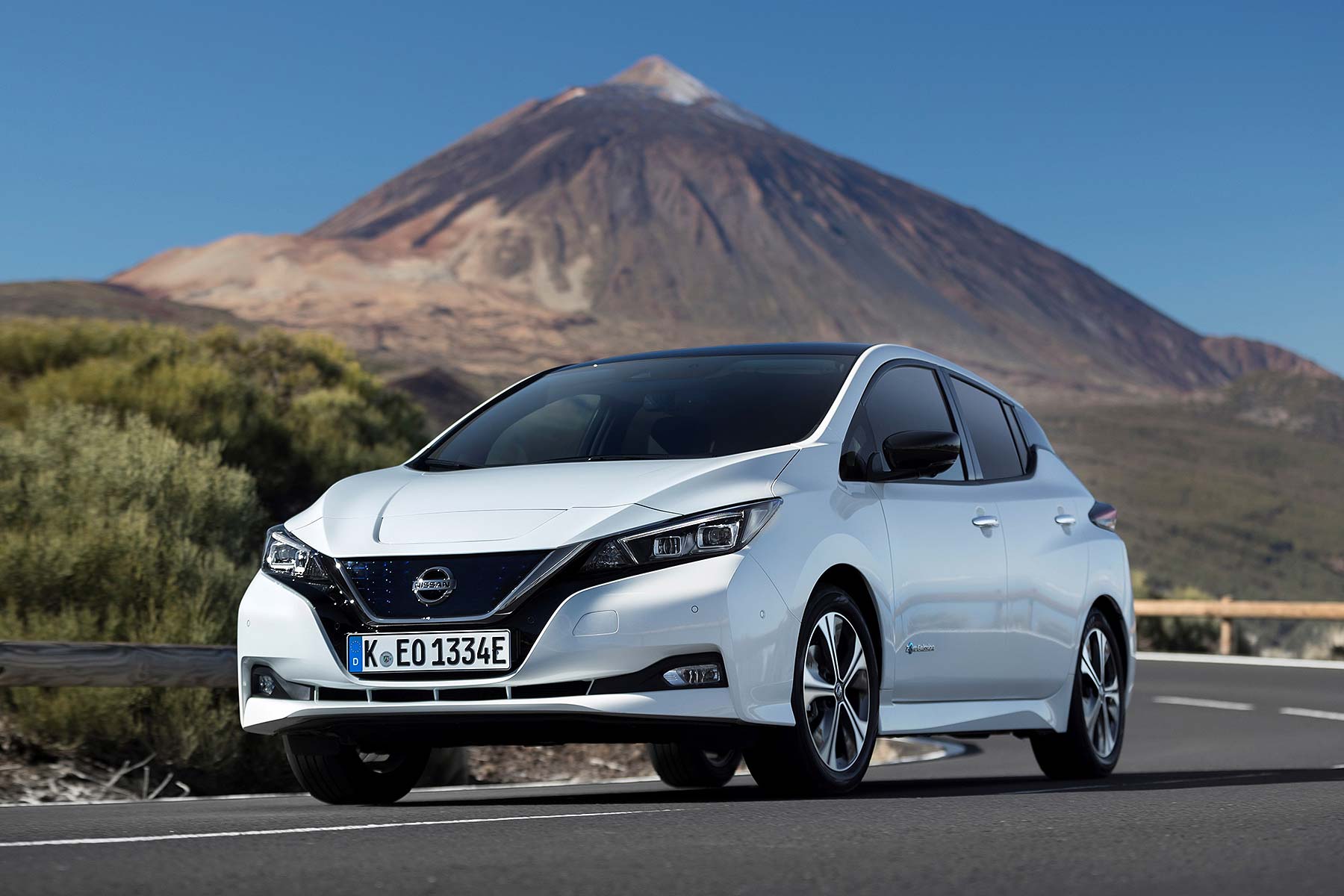 Cover your ears, Elon Musk. The Nissan Leaf is the world’s best-selling electric car, period. And it’s about to sell a whole lot more.
Cover your ears, Elon Musk. The Nissan Leaf is the world’s best-selling electric car, period. And it’s about to sell a whole lot more.
For all the hype over Tesla, it’s Nissan that’s been working hard at building and selling the first mass-market EV, meaning there are now more than 300,000 on the road globally, and 84,000 in Europe. The advantage this has given Nissan over its rivals is already enormous. Now it plans to cash in on this with the launch of the Mk2 Leaf, the world’s first ‘second-generation’ EV.
- Buy a new 2018 Nissan Leaf for £339 a month
This is the first time a volume maker has been able to take all that it’s learnt about electric cars from its customers, engineers and dealers, and roll out an improved car that addresses all this feedback. While, note, other big-brand makers all limp along with early iterations of their first all-electric cars.
It’s a significant moment, arguably even more so than Tesla’s long-drawn-out launch of the ‘mass-market’ Model 3. Not least because the new Leaf is, impressively, even cheaper than the original, by as much as £1,500. With a longer range, better interior practicality and, significantly, far more contemporary and less divisive styling, this is one of the new model launches of the year.
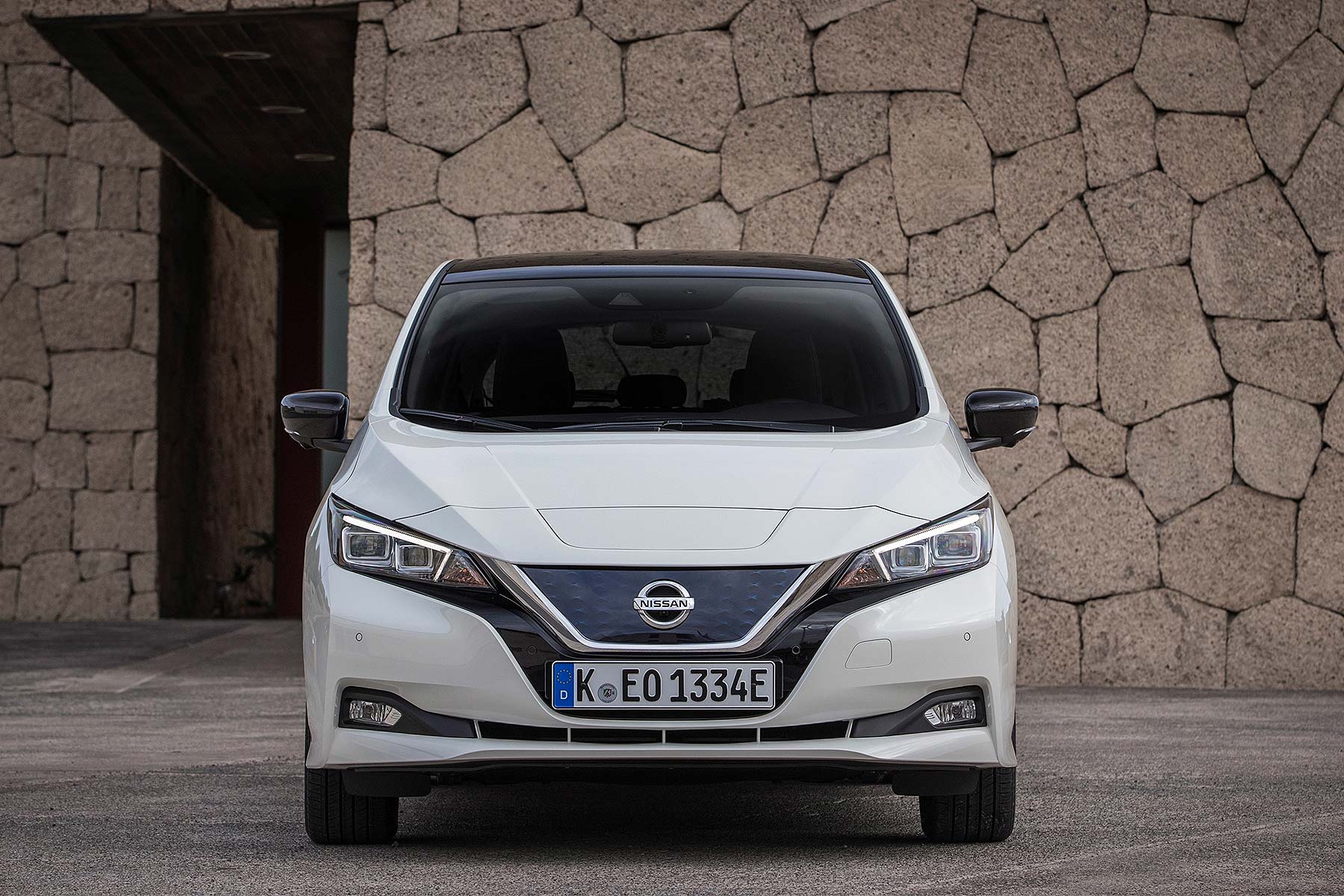
The Leaf is already on sale in Britain, with prices starting from £21,990 (including the £4,500 government Plug-in Car Grant). Deliveries of the UK-built car begin in February 2018. There are four trim grades (see below) and a launch-special 2.Zero variant, all of which use a more powerful 150hp electric motor and 40kWh battery (the previous car was 110hp and 30kWh).
Crucially, the Leaf now goes further than ever: 235 miles under the current NEDC test regime, and either 168 miles on the more real-world WLTP test, or an impressive 258 on the WLTP City test. Nissan reckons it’s now a viable day-to-day proposition for nine in 10 people, provided they have a charger at home. Cannily, every new Leaf comes with a free 7kW wall box, and going from zero to 80 percent charge takes 7.5 hours with one. It goes from zero to 80 percent in 40-60 minutes using the 50kW fast chargers you find at motorway service stations.
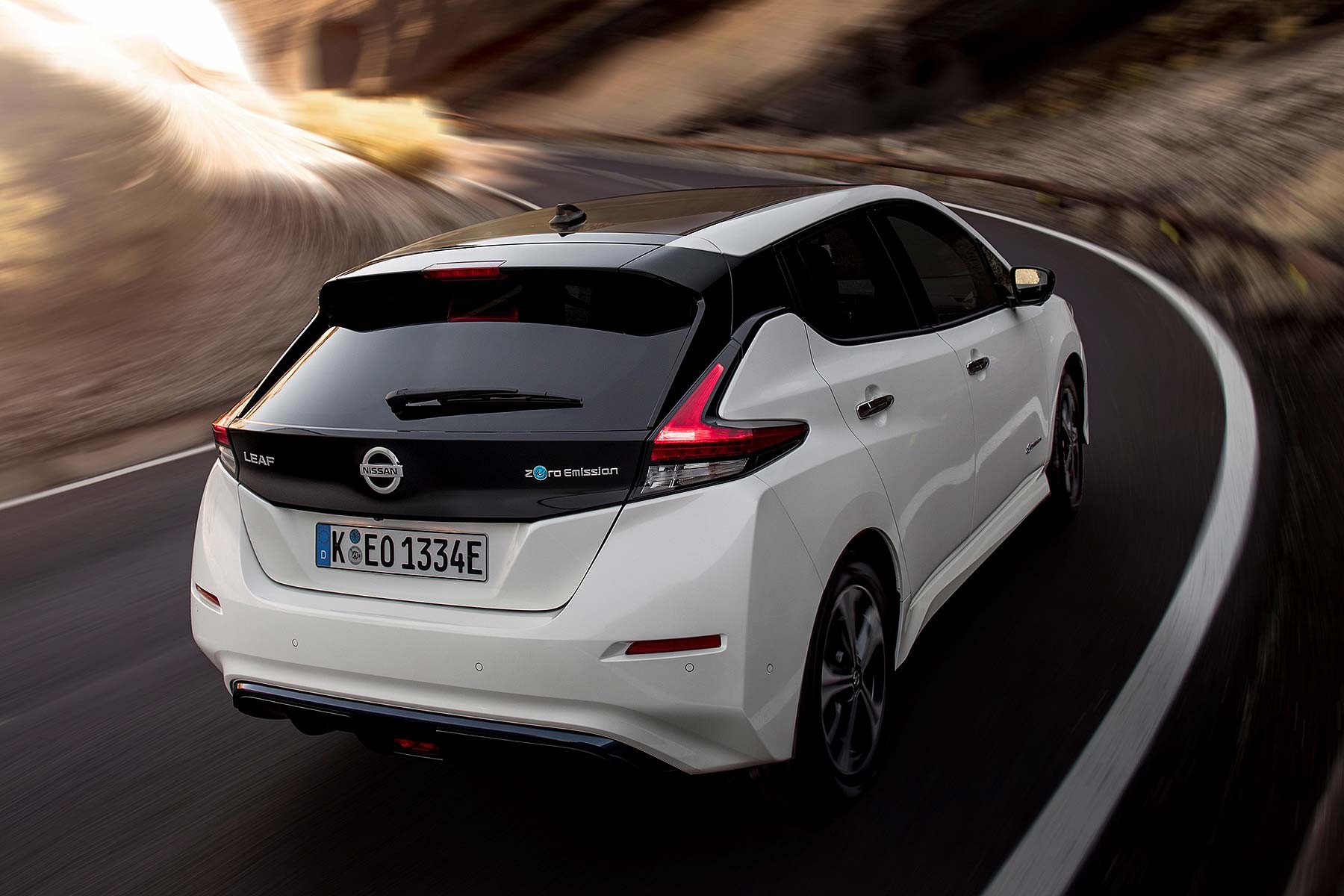
A Nissan GB spokesman revealed that sometimes, as many as 1 in 4 people visiting its UK customer site are looking at EV content – and this, remember, is a company that sells the high-volume Qashqai and Juke. It firmly believes 2018 could be a tipping point in EV uptake – not because it has an all-new electric car to launch, but because public mood has shifted so quickly.
That it does have an all-new electric car to launch is just a happy coincidence. If it’s a good one, that is. We flew to Tenerife (on carbon-offset flights, naturally) to find out.
First impressions
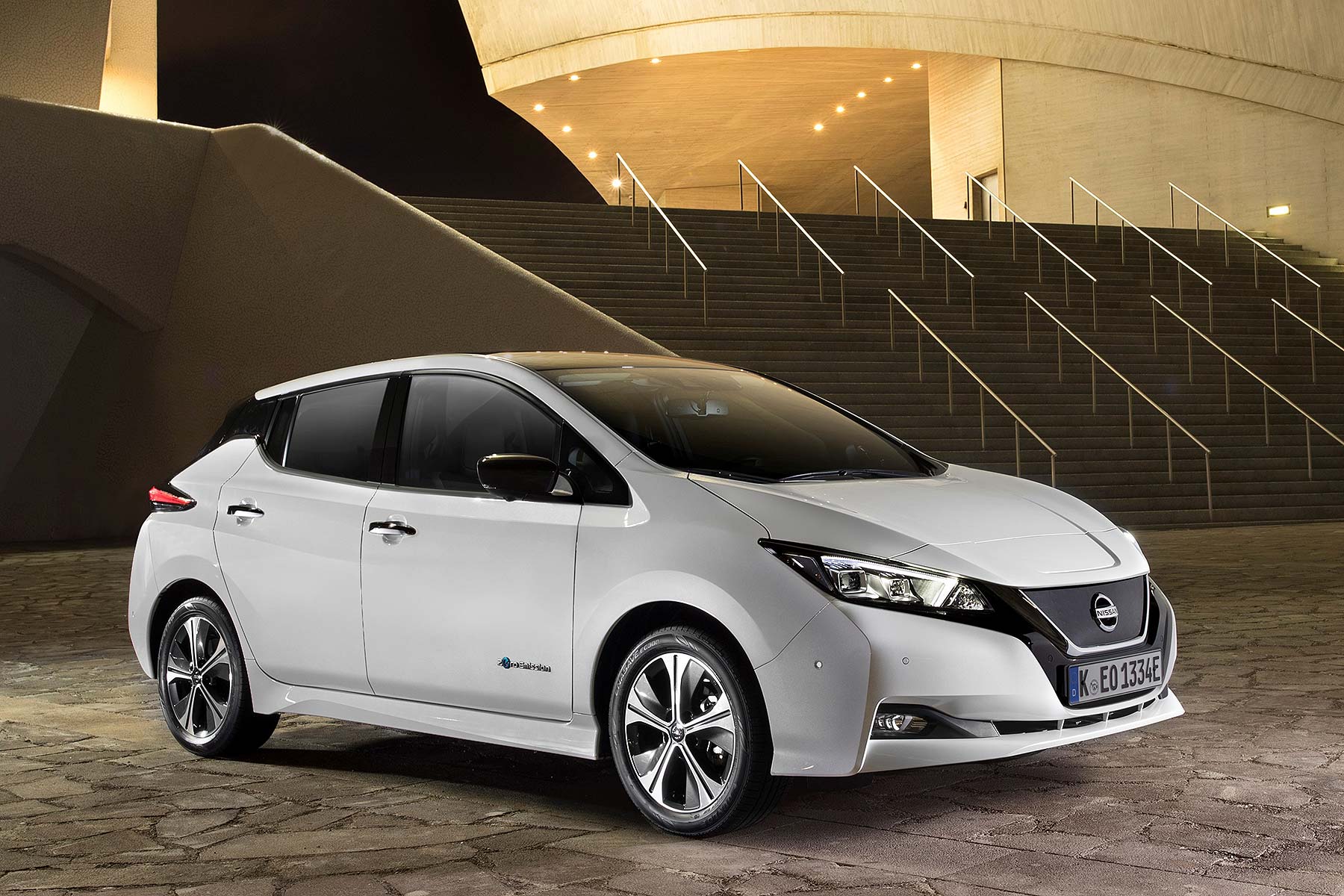
Doesn’t it look better than the Noddy Car-like old one? It’s lower, longer, sharper, with crisp lines where the old one had blobby curves. It’s far more sophisticated and contemporary; the nose has a sportier beak, with nicely-integrated Nissan V-grille and headlights, and the rear is more raked and sporty. The inset black tailgate and prominent lamps look great.
The battery charging point is again integrated into the nose. The angle of the socket has been altered, so it’s easier to plug in without stooping down. (Having it at the front means you can sit in and watch the fast-charger tick over, if you wish.)
Only rather sheer door surfaces show a lack of verve; presumably they’re this shape in the interests of aero efficiency, and at least there’s a nice set of flared rear haunches, in a half-nod to the Qashqai, to offset them. It’s still not totally space-age, but is infinitely tighter than the original – and a worthy alternative to the Tesla Model 3.
There are some smart details. The rear floating roof effect is distinctive (check out that cool C-pillar), as are the tail lamps that, from the rear, form the car’s shoulderline. A crisp-edged crease adds definition to the side, and the contrast roof is distinctive when seen on the move. The surface finish also seems more premium, with richer paint and upmarket details.
Overall, what’s most significant is the fact it’s a car you needn’t be slightly embarrassed by. It’s now got a bit of a cool factor, that will get nods of approval from friends and neighbours. It also won’t automatically mark you out as an early-adopting eco warrior. It’s now been normalised. Consideration rates will likely shoot up as a result.
First seat
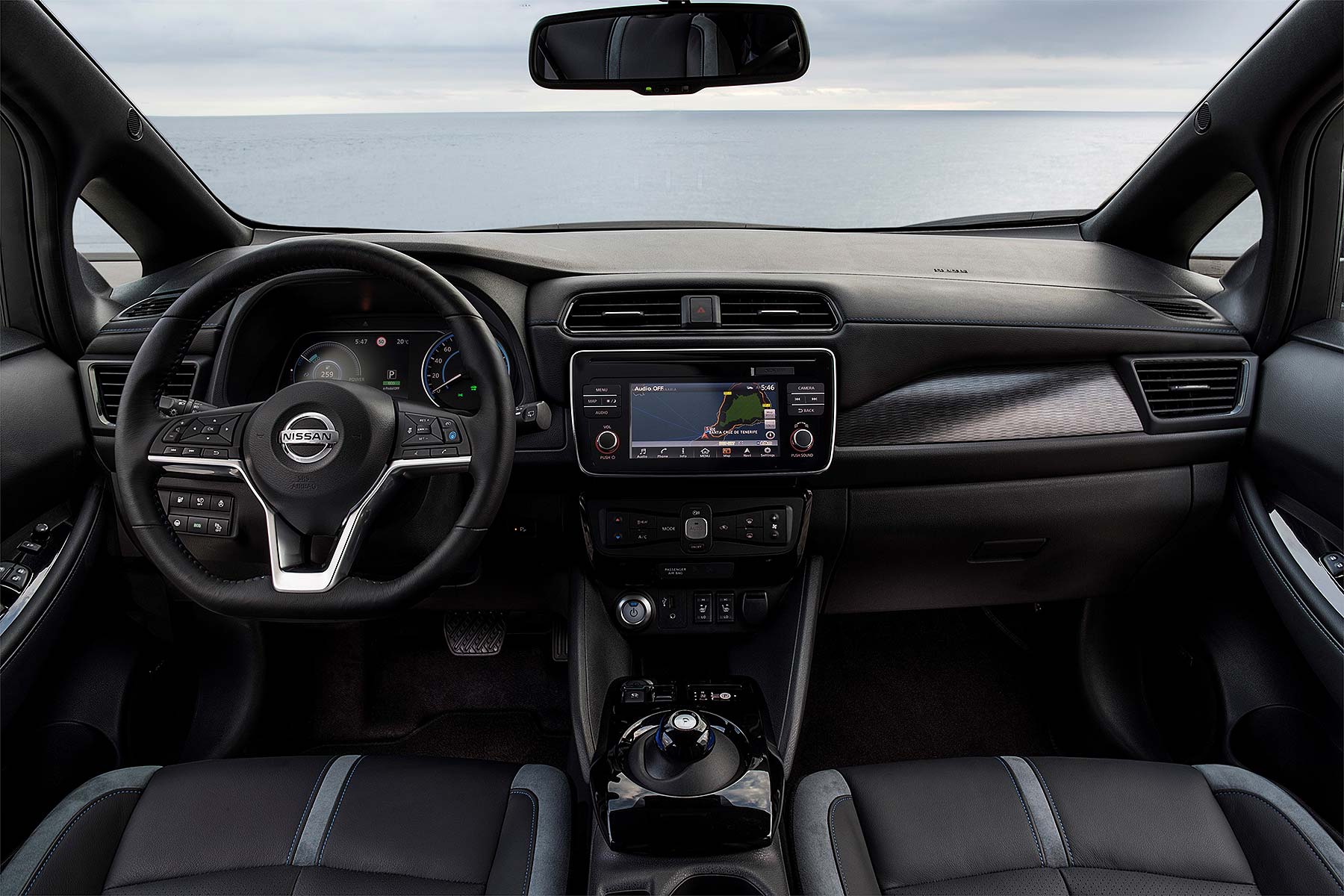
Like the outside, the interior looks far richer and more appealing than the old Leaf. There’s more form and definition to it, and the Tekna-spec test cars had a contrast-stitched leather-look finisher on the dash, concealing the hard plastics beneath. You don’t get the soft-touch trims you do in a Volkswagen, but the materials themselves are laser-precise in assembly and have a low-sheen finish that’s not overtly plasticky.
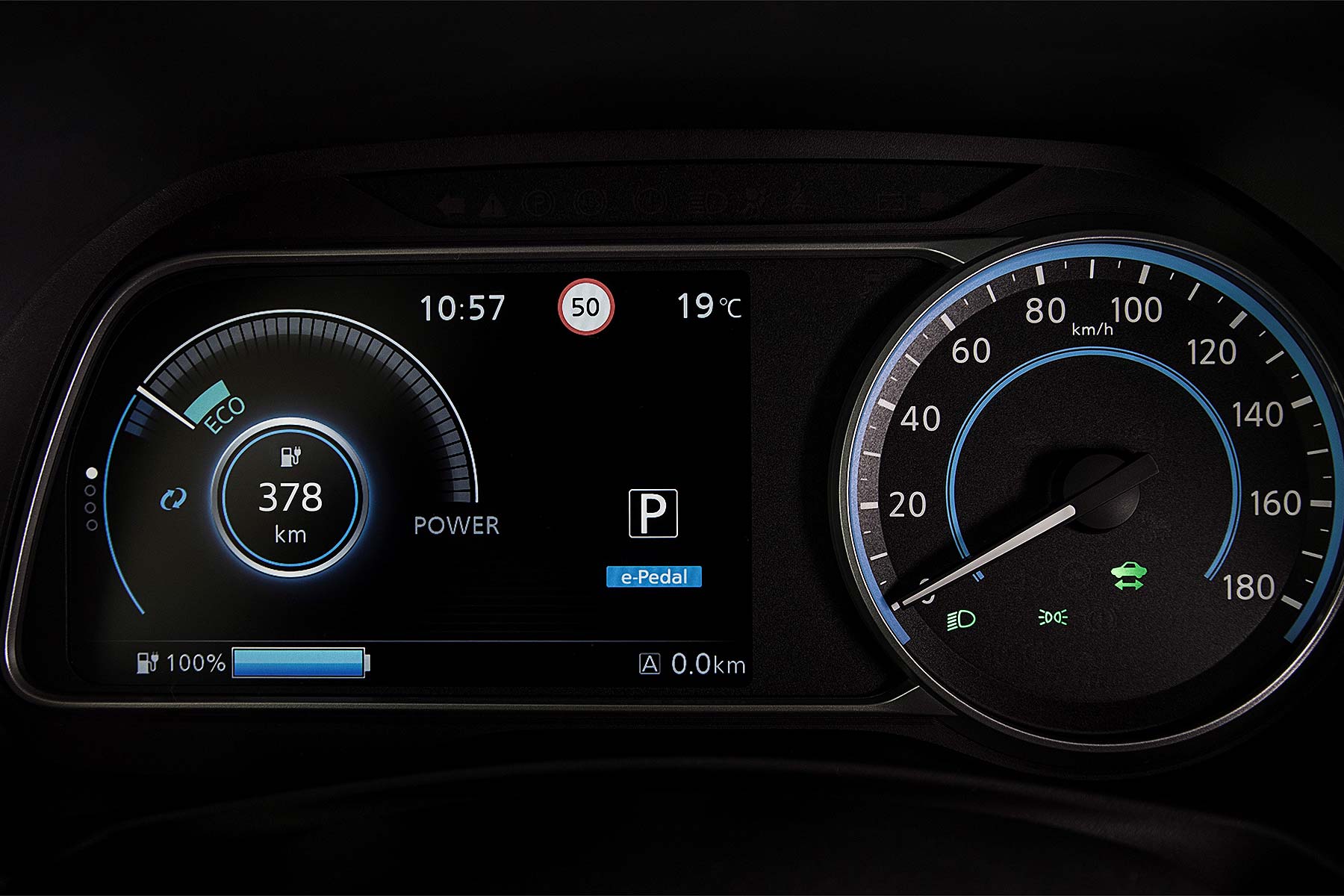
A smart semi-TFT meter set faces the driver. The speedo’s analogue, everything else is colour digital. It’s simple and, once you’ve mastered the many menus, intuitive. Less contemporary is the infotainment system, which remains Nissan’s dated, rather small and low-res system. It does have Apple CarPlay and Android Auto, but those used to a Tesla will find this setup hilariously dated.
Oddly, the steering wheel doesn’t adjust for reach, compromising the driving position. The seat are a little flat too, although still much less perch-like than the original (taller drivers may wish they went back further). Visibility is good, apart from the intrusion from the rear-view mirror in the middle of the heavily-raked windscreen. Generally, apart from the weird ‘spaceball’ gear selector (an unnecessary nod to the original), it’s all very modern Nissan and all the better as a result.
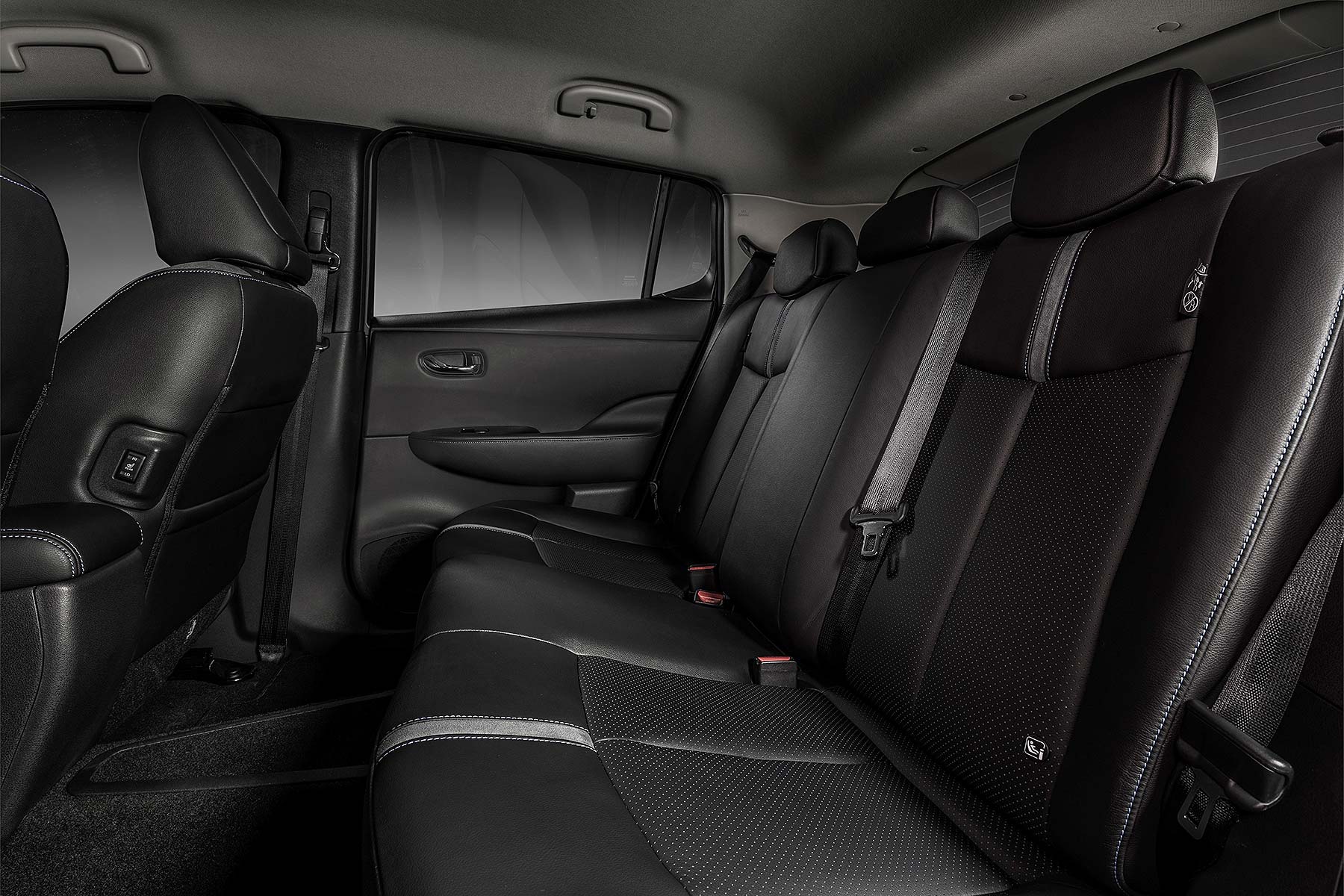
The Leaf is built on a bespoke platform that places the batteries beneath the seats. This means the floor beneath them is rather high, and as a result, so are the seats. It’s less perched than the old car, but some may wish the seats moved lower. It’s more noticeable in the back, where the high floor leaves knees teetering high in the air. The central spine of the battery also means bad luck for anyone stuffed into the middle.
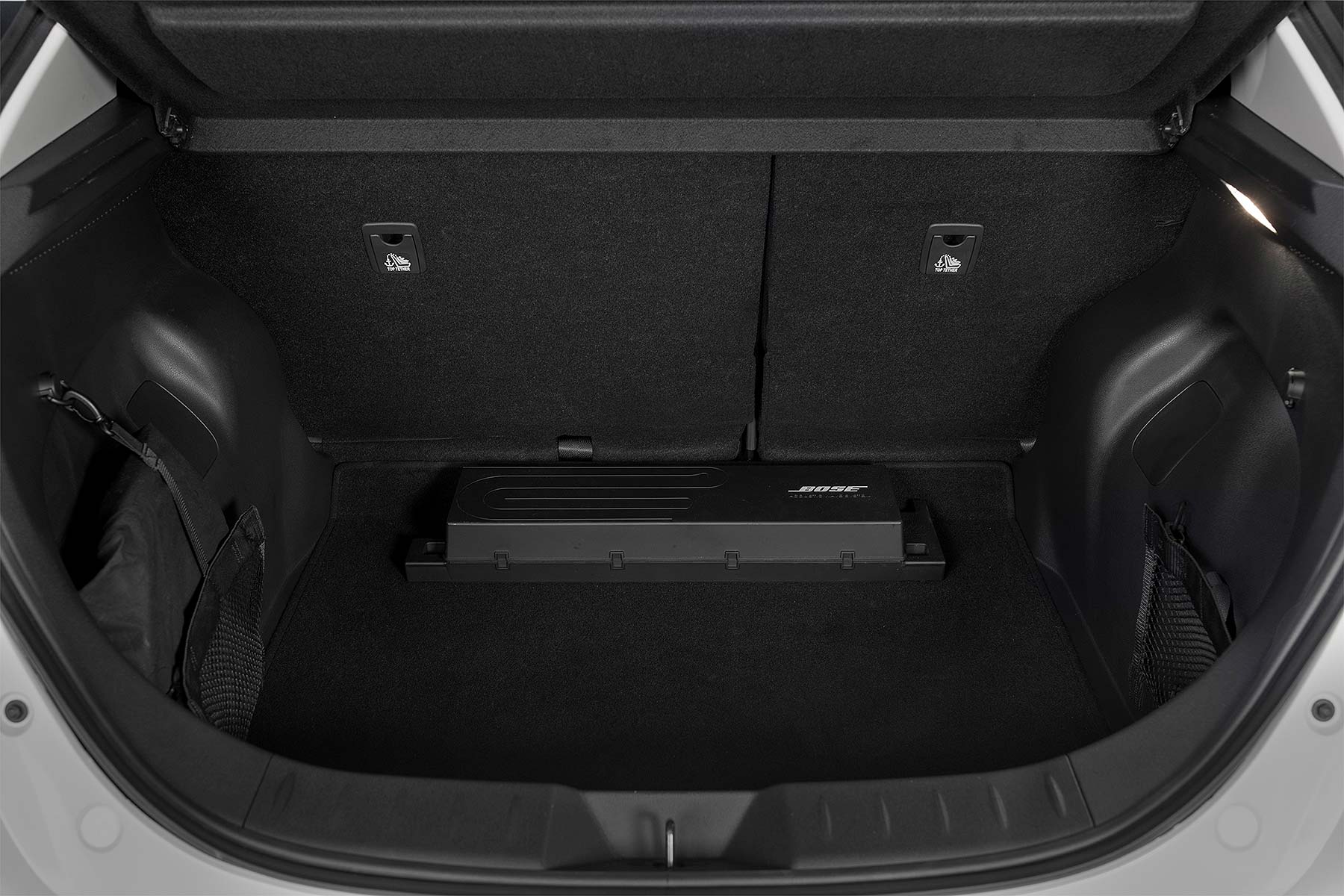
Nissan’s customer feedback demanded a bigger boot, which it’s delivered. It quotes 435 litres, although it’s not entirely clear how that figure was calculated, so we won’t yet compare it favourably to the 380 litres you get in a Golf. The boot is wider and deeper, though, and is let down only by two things – a steep step in the floor when you fold the rear seats, and a prominent Bose sound system ‘box’ that will end up battered and bruised within weeks. It’s optional, but as you’ll see, perhaps an option you’ll deem essential.
Access to the rear seats is easy, but comfort depends on who’s sitting up front. Legroom is tight if they’re tall, acceptable if they’ll compromise a bit (the high floor doesn’t help, but at least you can feet feet under the front seats). Headroom’s OK, and the seat base is comfier than the old car. It’s viable for families, albeit small ones.
First drive
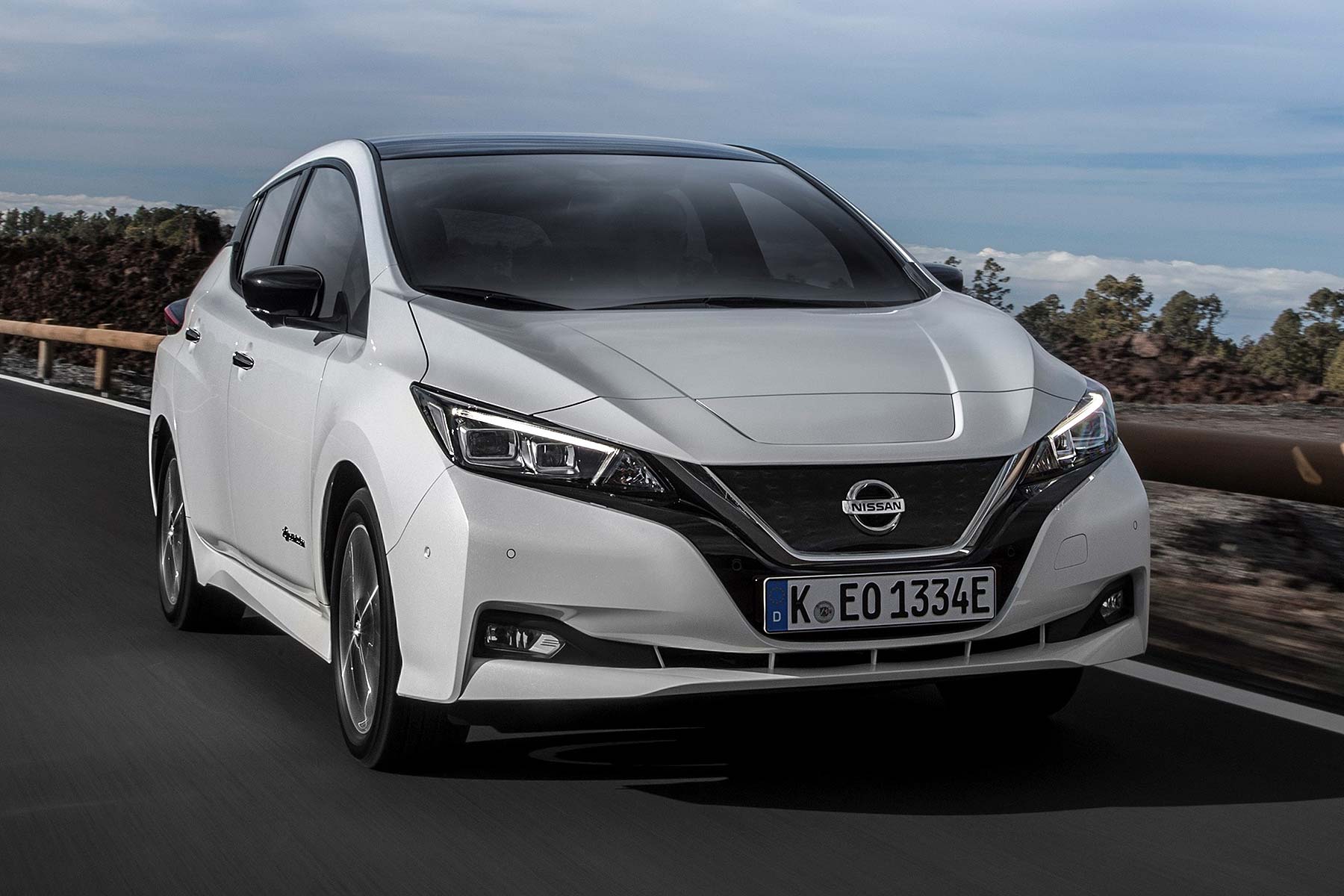
What strikes you first is the Leaf’s exceptional refinement. This is perhaps an obvious statement to make about an EV, but it’s refined way beyond simply not having any engine noise. The motor, for example, is exceptionally hushed, with little whine even when used hard – situations in which a regular engine would roar – and only the characteristic motor ‘whistle’. Even this is quieter than before.
It’s Nissan’s work on quietening down all other sources of noise that’s the standout. At 30mph, rolling refinement is genuinely near-silent, with minimal road and wind noise. Suspension bump-thump over bobbly surfaces is subdued and it doesn’t crash or smash into potholes.
At higher speeds, wind noise remains at bay, which is one of the more remarkable aspects of the Leaf; this is not an easy achievement. There’s little noise from the tyres and the suspension remains thud-free even over, say, motorway expansion joints. The similarities to a Rolls-Royce are valid, particularly how the quietness extends further – to the low-noise climate control system, and the hushed tick of the indicators.
That’s why you’ll want that Bose sound system. The peaceful cabin almost demands it.
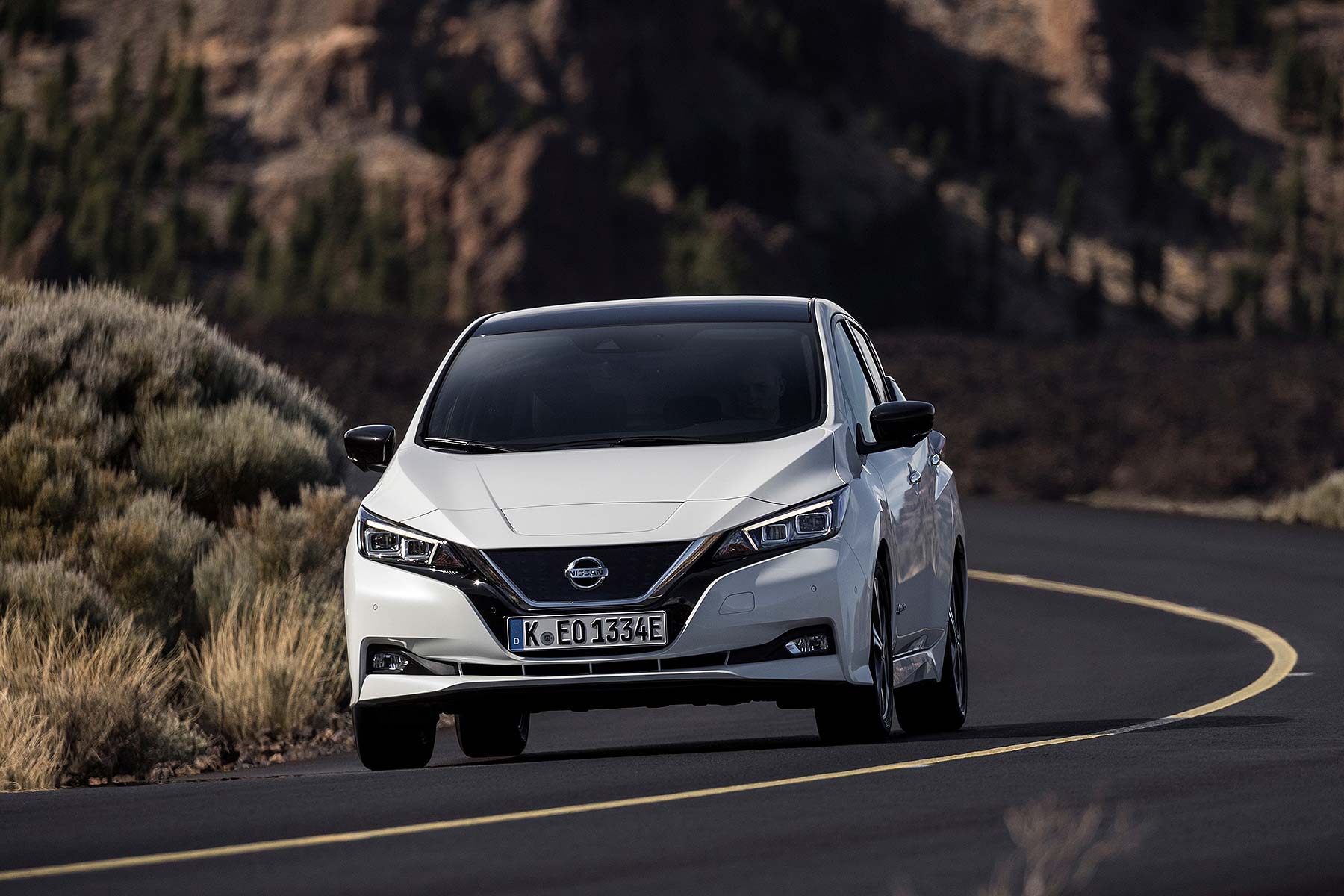
It drives far better than the original – and, indeed better than the U.S-spec car Motoring Research drove in LA last year. That’s because Nissan’s European engineers – many of them based at Cranfield in the UK – have been engineering this Leaf just for European consumption since 2013. It has bespoke engineering distinct from Japan and the U.S, and benefits immeasurably as a result.
Changes include stiffer suspension mounts, thicker anti-roll bars, softer springs and stiffer dampers. The steering ratio is faster. The rear spoiler has been modified so it’s less susceptible to side winds. It’s gone through a full engineering programme just for Europe, and it shows.
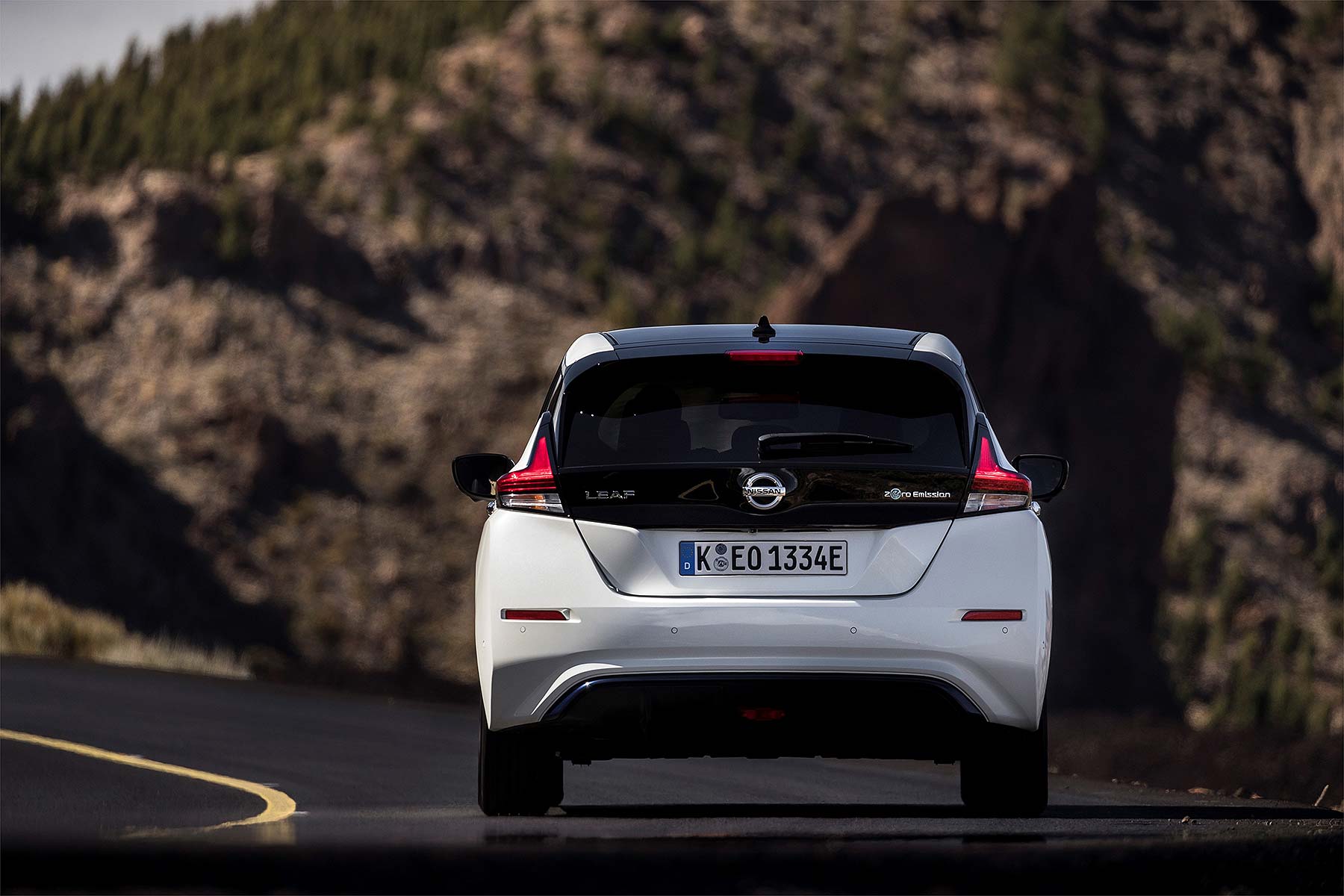
The old car wasn’t a confident handler. This one is, thanks to crisper, more direct steering, less lurch and roll, plus better use of the car’s low centre of gravity. It ‘seems’ a bit top-heavy because of the high seats, but you soon learn it’s not so. The ride is supple and nicely damped at speed, neatly using the low-down heft of the batteries to settle things down. Only over lumpier surfaces at slower speeds does it bumble and patter a bit.
At higher speeds, the Leaf is settled and planted, through corners it’s precise and predictable. There are no jarring aspects and it’s overall a pretty decent steer for an EV. Owners of the old car will feel like they’ve stepped a generation and a half, not just one.
The Leaf is surprisingly quick, as a 0-62mph time of 7.9 seconds suggests. A total of 38 percent more power and 236lb ft of instant torque makes it very responsive, and the fact you don’t have an engine screaming away as you enjoy this is surprisingly appealing, even for petrolheads. Nissan’s European engineers have tirelessly honed the response of the motor so it’s as linear as can be: the sort of power delivery you get from a big, classy V8, rather than a smaller, more thrusting downsized turbo.
And then there’s e-Pedal. Nissan’s chuffed to bits with this. It’s used the regenerative effect of the motor-generator to give one-pedal driving in 90 percent of situations. Press the accelerator, the car goes faster. Lift it, to ease off acceleration and then, as you ease some more, start slowing it down. Lift off completely and the brake lights will come on and 0.2G of deceleration will be yours, immediately extinguished when you go back on the accelerator again.
It takes a bit of getting used to but it’s surprisingly intuitive. On one 40-kilometre stretch, we didn’t press the brake pedal once. That’s remarkable. It seems like a gimmick but is surprisingly natural to use and we loved it. If you don’t, there’s a button on the dash to turn it off again.
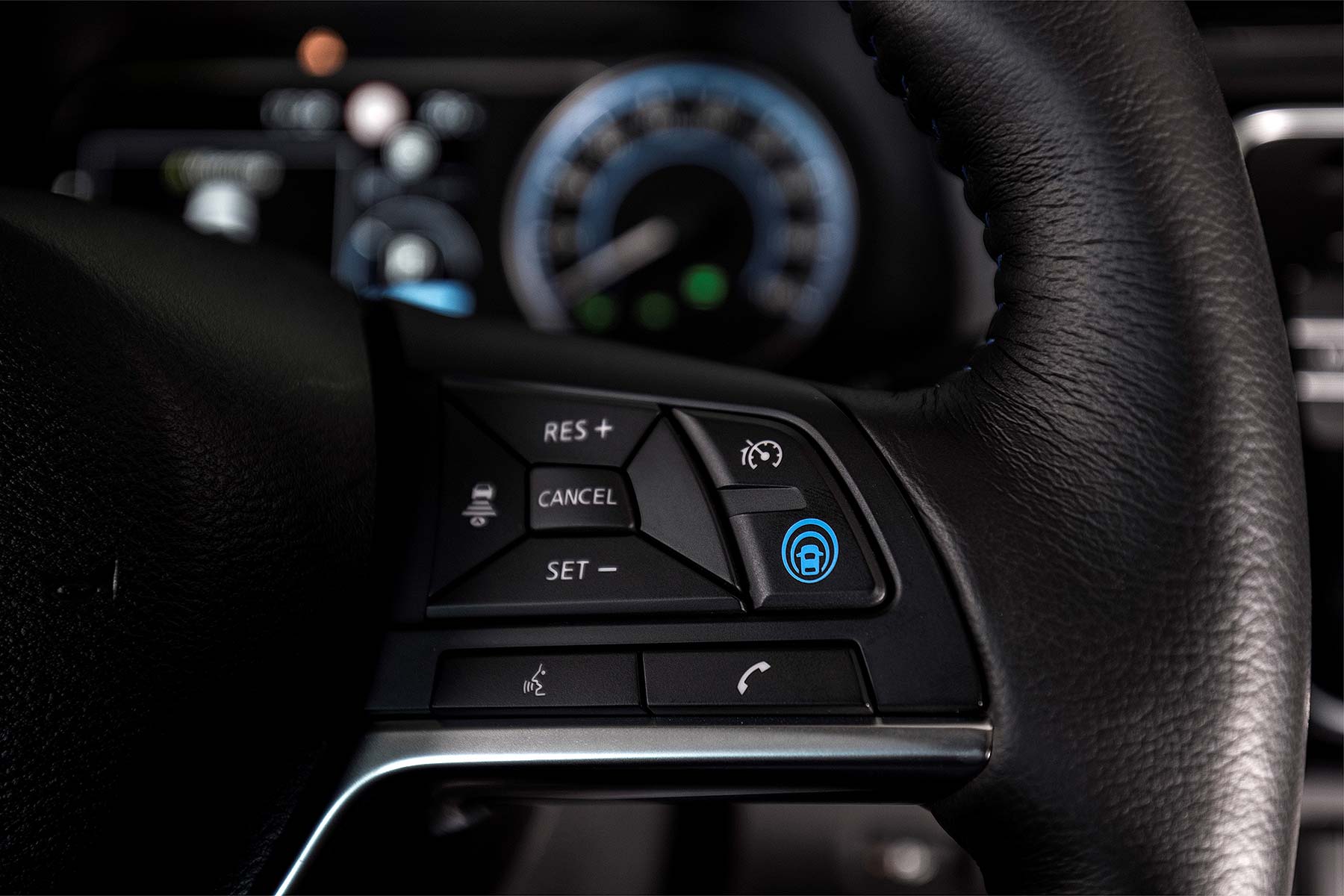
There’s also a button for ProPilot, Nissan’s first-generation autonomous drive system. The firm is being smart here, calling it a driver assist system and barely mentioning the word ‘autonomy’. That’s sensible. It performs as well as other ‘Level 2’ systems from rivals, but these are still very much ‘assist’ rather than ‘trust’, and thus reduce customer expectations.
At least we can now put far more trust in the range. The test route took us nearly 70km up a twisting mountain road 2,400 metres above sea level. At the top, we didn’t have enough range to get back, according to the sat nav. But, thanks to battery regen and the ingenious e-Pedal, we covered almost 100km back to base and still ended up with 20 percent battery remaining. For the majority, the Leaf is now a fully usable daily EV driver.
First verdict
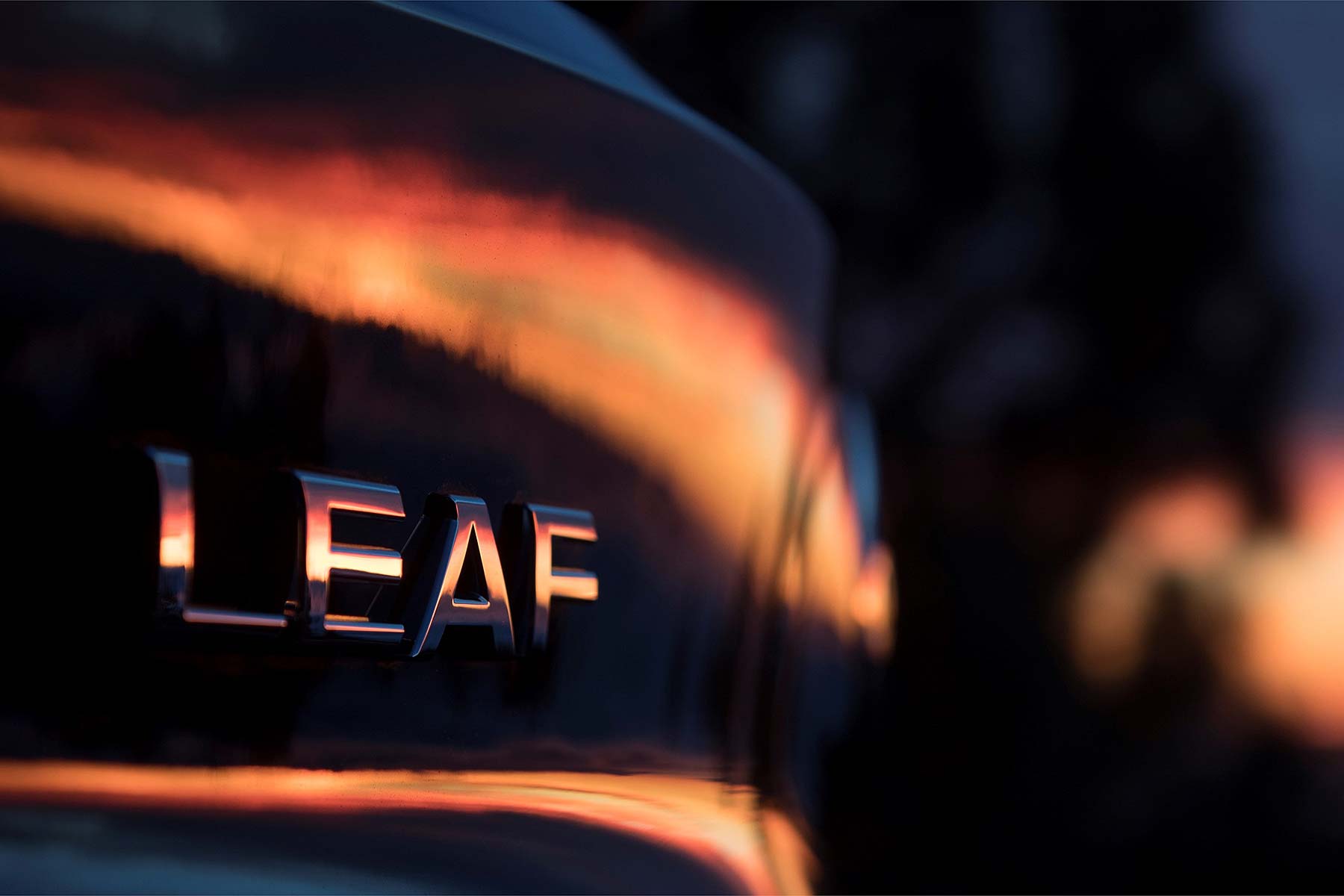
The 2018 Nissan Leaf is exactly the car it needed to be. It’s better all round, and crucially, more normal too. A stylish, contemporary car that just happens to be electric.
The EV aspect is exceptional, from the brilliant refinement, to the punchy and classy performance, to the extended range. It rides and handles with more European polish, and it’s even pretty good fun.
It could well be the EV that convinces newly-receptive car buyers that electric cars are the way to go. Once you add in low running costs, and retained values that now mirror conventional cars, and Nissan’s feature-packed smartphone app that makes operating one as painless as possible, the advantages over petrol or diesel stretch.
There are still foibles. Practicality could still be better, for example. The infotainment system is aged, the driving position compromised. But they’re not deal-breaking deterrents. Overall, the new Leaf is an impressive machine that delivers exactly what it needed to do, on time, for a competitive price. The electric car for normal people is here.
Five rivals
- Tesla Model 3
- BMW i3
- Hyundai Ioniq Electric
- Renault Zoe
- Volkswagen e-Golf
Prices
- Visia: £21,990
- Acenta: £24,290
- N-Connecta: £25,990
- 2.Zero: £26,490
- Tekna: £27,490
All prices include £4,500 government Plug-in Car Grant
Specifications
Power: 150hp
Torque: 236lb ft
0-62mph: 7.9 seconds
Top speed: 89mph
Range: 235 miles (NEDC); 168 miles (WLTP); 258 miles (WLTP City)
Length/width/height: 4,490/1,788/1,530mm
Boot capacity: 435 litres
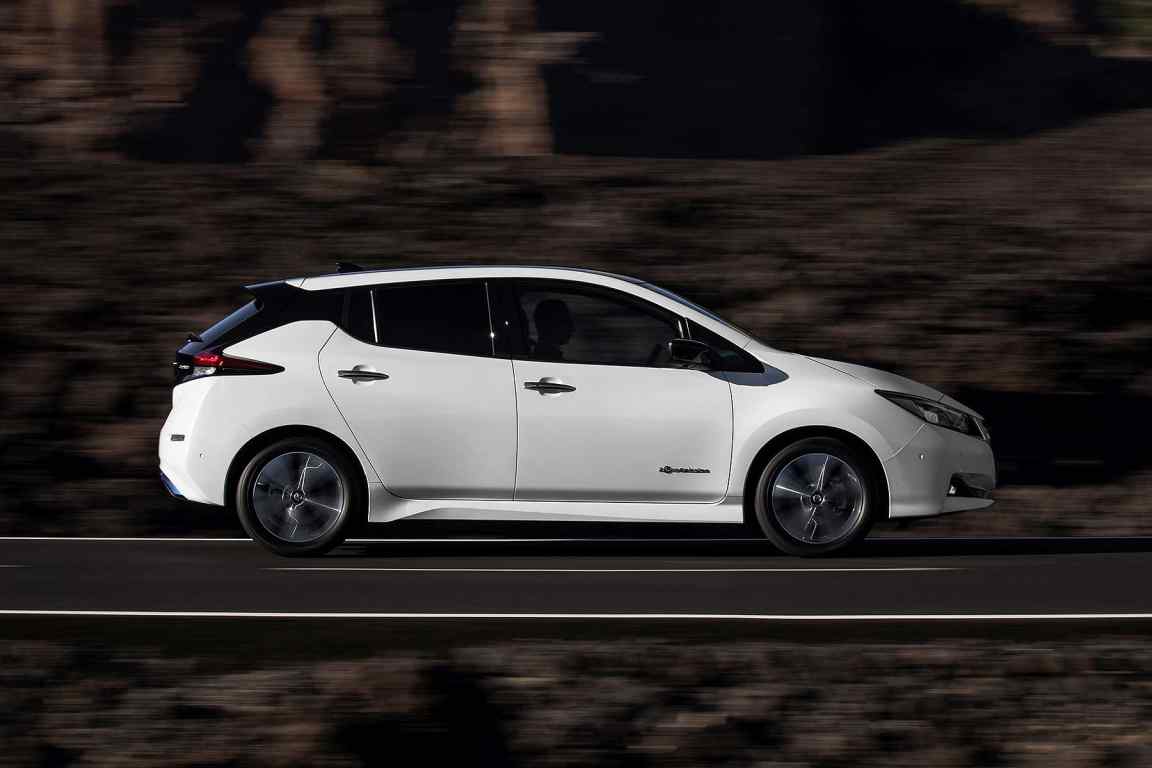
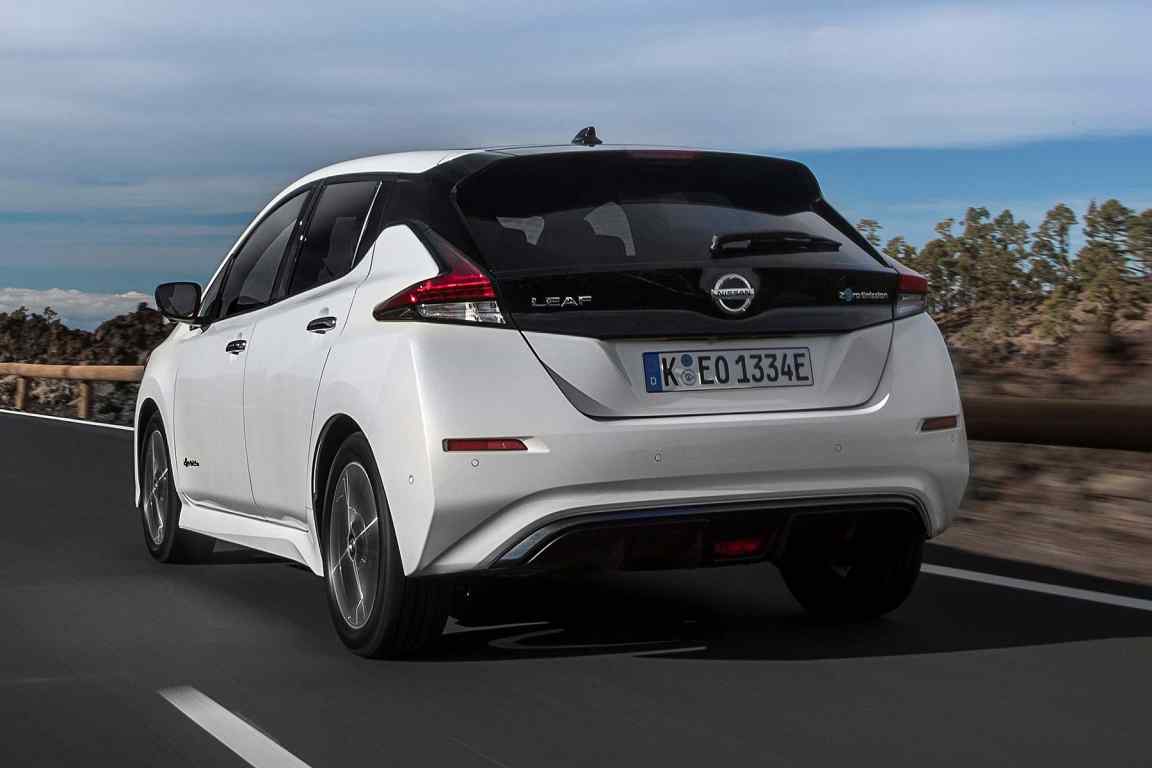
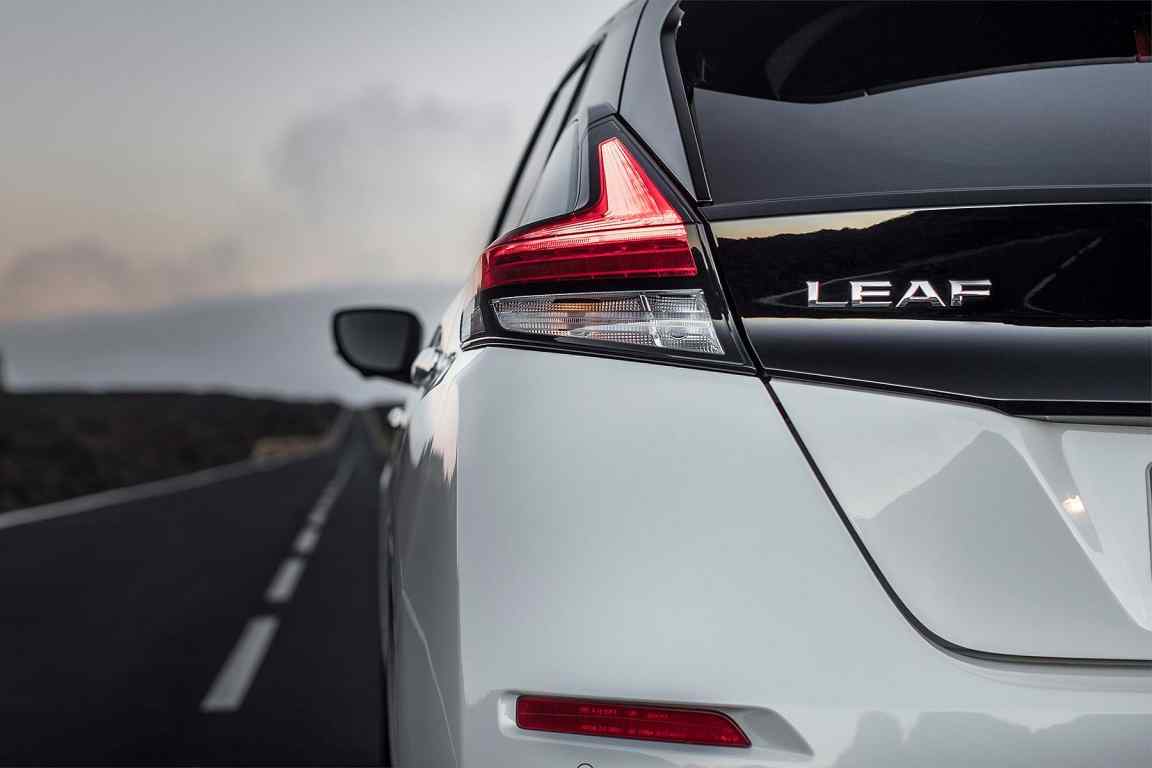
[…] cars weren’t really a thing in 2010. The Nissan Leaf was barely out of nappies, while the Mitsubishi i-MiEV was woefully short of range. Just 167 […]